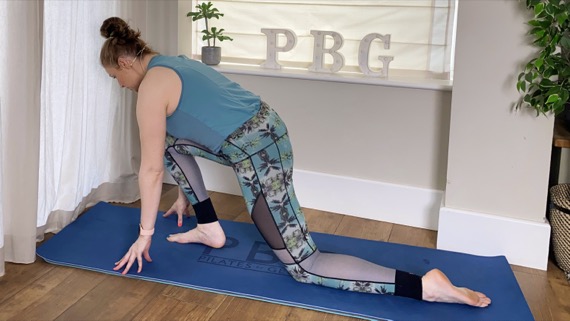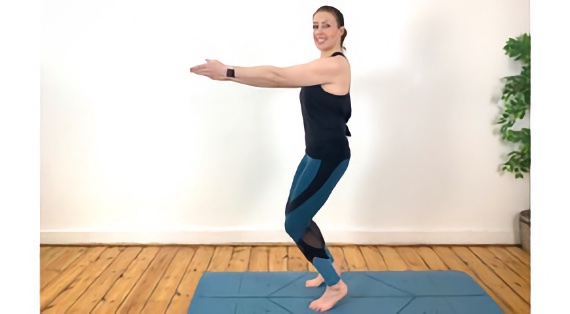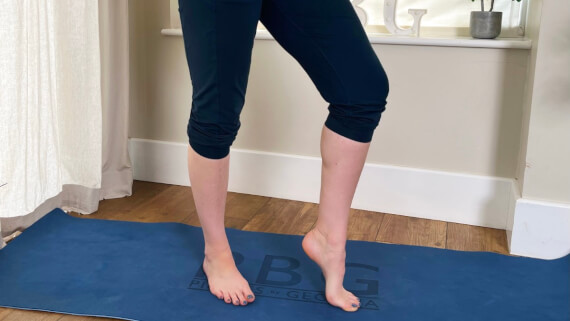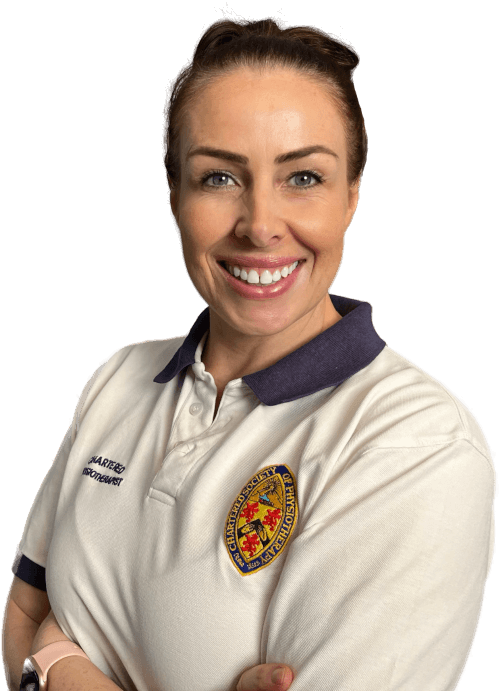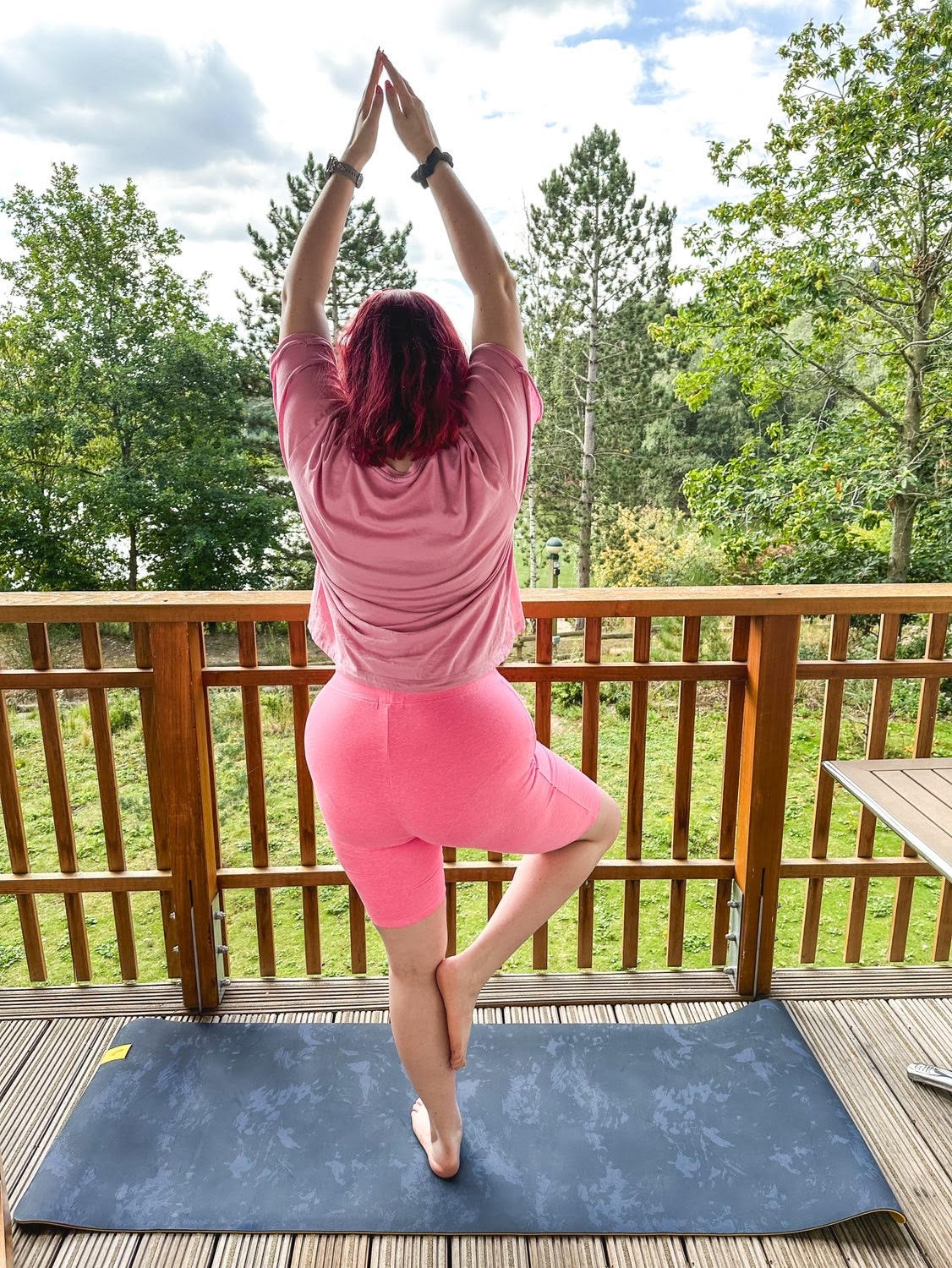Toe Pain
Why do we get Toe Pain?
Each foot is made up of 26 bones, 30 joints and more than 100 muscles, tendons and ligaments, all of which work together to provide support, balance and mobility. With so many moving parts the foot has, it makes sense that it's very vulnerable to injury or overuse.
All about Toe Pain
Georgia explains how Pilates can help with Toe Pain.
Next:
Types of Toe Pain
- Broken Toe: A broken (fractured) toe is an injury normally caused by either dropping a heavy object on the toe or stubbing the toe hard. It takes a lot of force to break a bone, however, toe bones are more vulnerable because they are small bones on the edge of the body so are more likely to be injured in the first place.
- Sprain / Strain: A torn or stretched ligament in the toe is known as a sprained toe. Often caused by trauma (hitting your toe on something) or hyperextension of your toe. Hyperextension refers to extending the joints in your toe beyond their natural range of motion. This can happen when your toe gets stuck on something while the rest of your foot keeps moving forward.
- Morton's neuroma: Also known as Morton's metatarsalgia, occurs when a nerve in the foot becomes irritated and extremely painful. It is normally found in the nerve between the third and fourth toes, but the second and third toes can be afflicted too. It may involve a single foot or both feet.
- Plantar plate problems: The plantar plate is the soft tissue on the sole of the foot, connected to the base of the toe and metatarsal bones. Its function is to cushion you when running or walking and assists in bringing the toe to the ground when you are standing. Plantar plate problems can trigger other conditions such as a dislocated toe or hammer toe.
- Sesamoiditis: The sesamoid bones’ smooth surface enables tendons to glide over them. The tendons allow the muscles to function properly, are key in weight bearing exercise and are needed to move the big toe. When the tendons surrounding the sesamoids get inflamed or irritated, this is termed sesamoiditis, a type of tendinitis. Sesamoiditis occurs more frequently in runners, ballet dancers and participants in some team sports. When sportspeople damage the sesamoid bones, it is referred to as turf toe injury because the toe is bent backwards.
- Tarsal tunnel syndrome: This is a compression of the posterior tibial nerve under the thick ligament (the flexor retinaculum) on the inside of the ankle that produces symptoms anywhere along the path of the nerve running from the inside of the ankle into the foot.
- Ingrown toenail: This is when the corner of your toenail grows into your skin. If an ingrown nail causes a break in the skin, bacteria may enter and cause an infection. It’s a common condition that happens frequently when you cut your toenails by tapering around the corners or wearing improperly fitted shoes.
- Bunion: A bunion is a painful slow developing bony bump that develops on the inside of the foot at the big toe joint. Pressure on the big toe joint causes the big toe to lean toward the second toe. Over time, the normal position of the bone, tendons, and ligaments changes, resulting in the bunion deformity. Often, this deformity gradually worsens over time and may make it painful to wear shoes or walk.
- Arthritis: Occurs when cartilage (tissue in joints that cushions bones) breaks down. The breakdown causes bones to rub together. In the toes, osteoarthritis could cause your ligaments and soft tissue to become weaker, which you may also feel painful to walk or put weight on your through the foot. Both injuries and overuse can lead to arthritis.
- Gout: Gout is caused by the buildup of uric acid in the bloodstream, which is a waste product produced by the body when it breaks down purines. Purines are found in many foods, including red meat, seafood, and alcohol. When the body produces too much uric acid or cannot eliminate it efficiently, the uric acid crystals accumulate in the joints, leading to an inflammatory response. Gout in the toes may also be caused by an injury or trauma to the joint.
Diagnosing Toe Pain
- Broken Toe: This is a painful injury. Broken bones bleed so the area swells quickly and bruises as the blood travels through to the skin. Sometimes it is possible to see blood beneath the toenail. There will be tenderness over the toe and it may be difficult to walk.
- Sprain / Strain: There will be pain, swelling, tenderness and bruising in the affected toe. The joint may feel loose or weak and may not be able to bear weight. The intensity of your symptoms will vary depending on whether the ligament is overextended or actually torn.
- Morton's neuroma: Leads to discomfort and a numb feeling between the toes. There can be extreme pain in the ball of the foot as if standing on a stone. It is easily aggravated by walking or wearing tight fitting shoes.
- Plantar plate problems: Pain in the ball of your foot, a positional change in your second or third toe over time or suffering with a Morton's neuroma (see above).
- Sesamoiditis: Pain is felt beneath the big toe near the ball of the foot. Bruising and swelling can occur and flexing the big toe can be uncomfortable.
- Tarsal tunnel syndrome: Initially sporadic numb feeling or tingling sensation, which gradually becomes more severe. Pain in the arch of the foot may also be experienced.
- Ingrown toenail: Painful, red, swollen and warm. It can if infected, leak pus and have a foul odour.
- Bunions: Cause pain, tenderness, redness and inflammation around the affected area. There is also often hardened skin on the bottom of the foot with a callus or corn on the bump.
- Arthritis: Leads to swelling, pain and stiffness in the toes and the joints may appear bigger than usual. You may have an achy feeling in your feet and toes, especially if you've been particularly active or worn high heels. Some people also get pain in their feet at night.
- Gout: This is a sudden and intense pain, redness, heat and swelling in the affected joint. The pain can be so severe that even the weight of a bedsheet can cause discomfort.
Treatment for Toe PainEarly Advice - RICE
- Rest: Activity Modification - Crutches may be useful for a few days if toes are sore to load through.
- Ice: If swollen and inflamed - apply a covered ice pack to the injury for up to 15 minutes 2 or 3 times a day.
- Compress: Compress the foot using supports, such as Tubigrip, or tape toes together to stabilise them.
- Elevate: Elevation minimises swelling. Raise your foot up higher than your heart.
Progress
Try to walk focusing on placing your heel down first as your foot strikes the floor.
Do watch the PBG information class on toe pain and then try the QuickFix exercise class to learn how to safely stretch and strengthen the toes.
Free Class: Quick Fix for Toe Pain
Free Quick Fix video on Toe Pain
Got any questions?
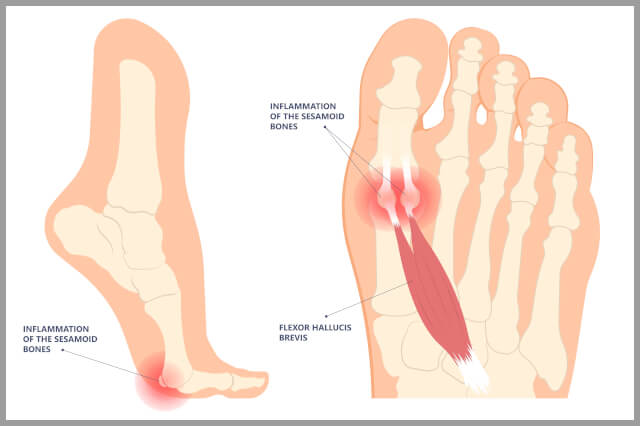
 Physio Tip!
Physio Tip!
Frequently, the following is sufficient to ease the pain:
- A change in footwear (go large!)
- Taking pain relief
- Getting plenty of rest
- Maintaining a healthy body weight (BMI)
- A personalised course of physiotherapy (try the PBG personalised plan approach to rehab).
Need more help?
Alert!
Contact your healthcare provider if:
- You have severe toe pain
- You have badly hurt your big toe, and/or your toe is pointing at an odd angle
- You feel faint, dizzy or sick from the pain
- You heard a snap, grinding or popping noise at the time of injury
- You have any tingling or loss of sensation in your foot
- You have difficulty moving your toes or you cannot walk.
These might be signs of a broken ankle or a more serious injury.
Are these exercises suitable for me?
Disclaimer: All information presented on this page is intended for informational purposes only and not for the purpose of rendering medical advice.
The information contained herein is not intended to provide medical advice, diagnose, treat, cure or prevent any disease.
Continue your rehab with us
Join PBG today to safely build and progress your rehab
Georgia is a fantastically experienced and knowledgeable physiotherapist.
Oliver Templeton-Ward
Consultant Orthopaedic Surgeon
Feedback from our PBG community
